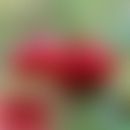Synonym(s)
DefinitionThis section has been translated automatically.
The stinking chamomile (Anthemis cotila) is one of the most common chamomiles (Anthemis) in Europe. It is an annual, up to 50 cm tall, scattered and rare wild herb from the Asteraceae family. In addition to the stinking chamomile, the main subspecies found in Central Europe are the field chamomile (Anthemis arvensis), Carpathian chamomile (Anthemis cretica subsp. carpatica) and the Ruthenian chamomile (Anthemis ruthenica).
The dog chamomiles are similar to the true chamomile, but are not biologically related and are a separate genus. The flower heads of dog chamomile are filled and it does not have the typical chamomile scent.
Phytotherapeutically insignificant, allergologically already in the case of frequent allergic reactions.
OccurrenceThis section has been translated automatically.
You might also be interested in
Field of application/useThis section has been translated automatically.
The dog chamomile has no essential phytotherapeutic significance. In contrast to the true chamomile (Matricaria chamomilla), the plant is allergologically relevant. The sesquiterpene lactone anthecotulide externally causes severe skin irritations, conjunctivitis and allergic reactions of the respiratory organs in sensitive persons. Systemic intake (e.g. by drinking a dog chamomile tea) may cause irritation of the mucous membranes and anaphylactic reactions.
Camomile is said to have nausea-inducing, menstrual and spasmolytic properties. In the USA the infusion of the herb is said to be used for colds, rheumatic complaints, headaches and fever. Applications are not recommended.
Undesirable effectsThis section has been translated automatically.
Allergological information: Known allergen: Anthecotulid. Sensitizing power: Strong. Frequency of sensitization: Occasional.
Note(s)This section has been translated automatically.
Although numerous cases of allergic and toxic contact dermatitis have been described in the literature, the majority of these are toxic reactions. Cross-reactions with other types of composites (see below composite mix) are to be expected and have already been observed.
LiteratureThis section has been translated automatically.
- Hausen BM, Vieluf K (1997) Allergy plants, plant allergens. Ecomed publishing house Landsberg/Munich 71-72
- Quarenghi MV et al (2000) Antimicrobial activity of flowers from Anthemis cotula. Fitoterapia 71: 710-712




